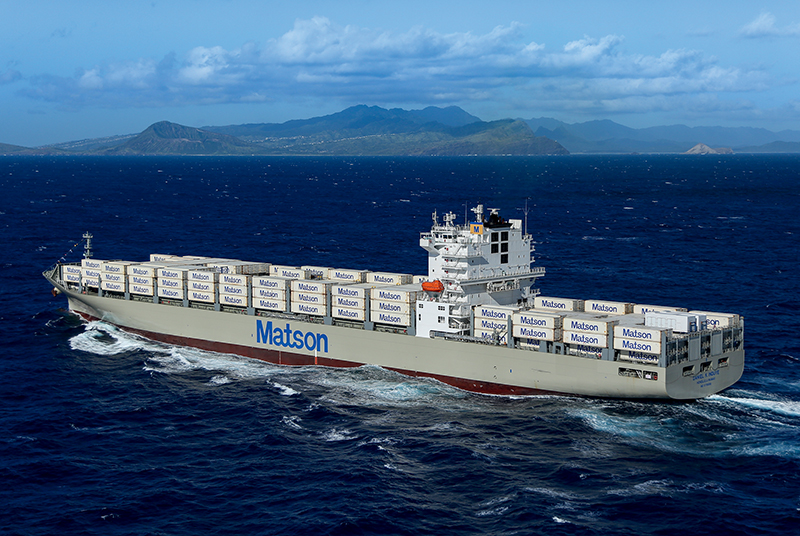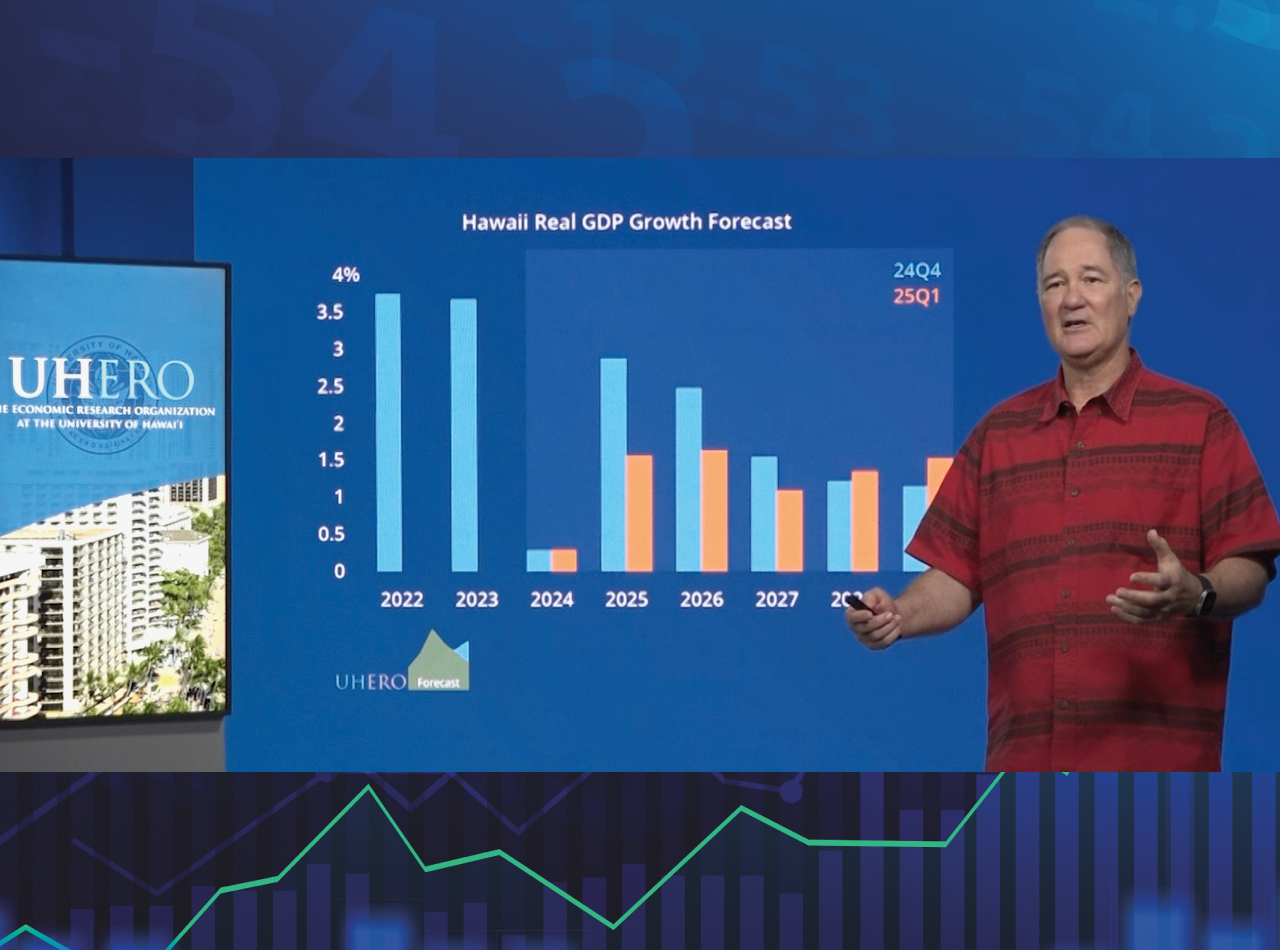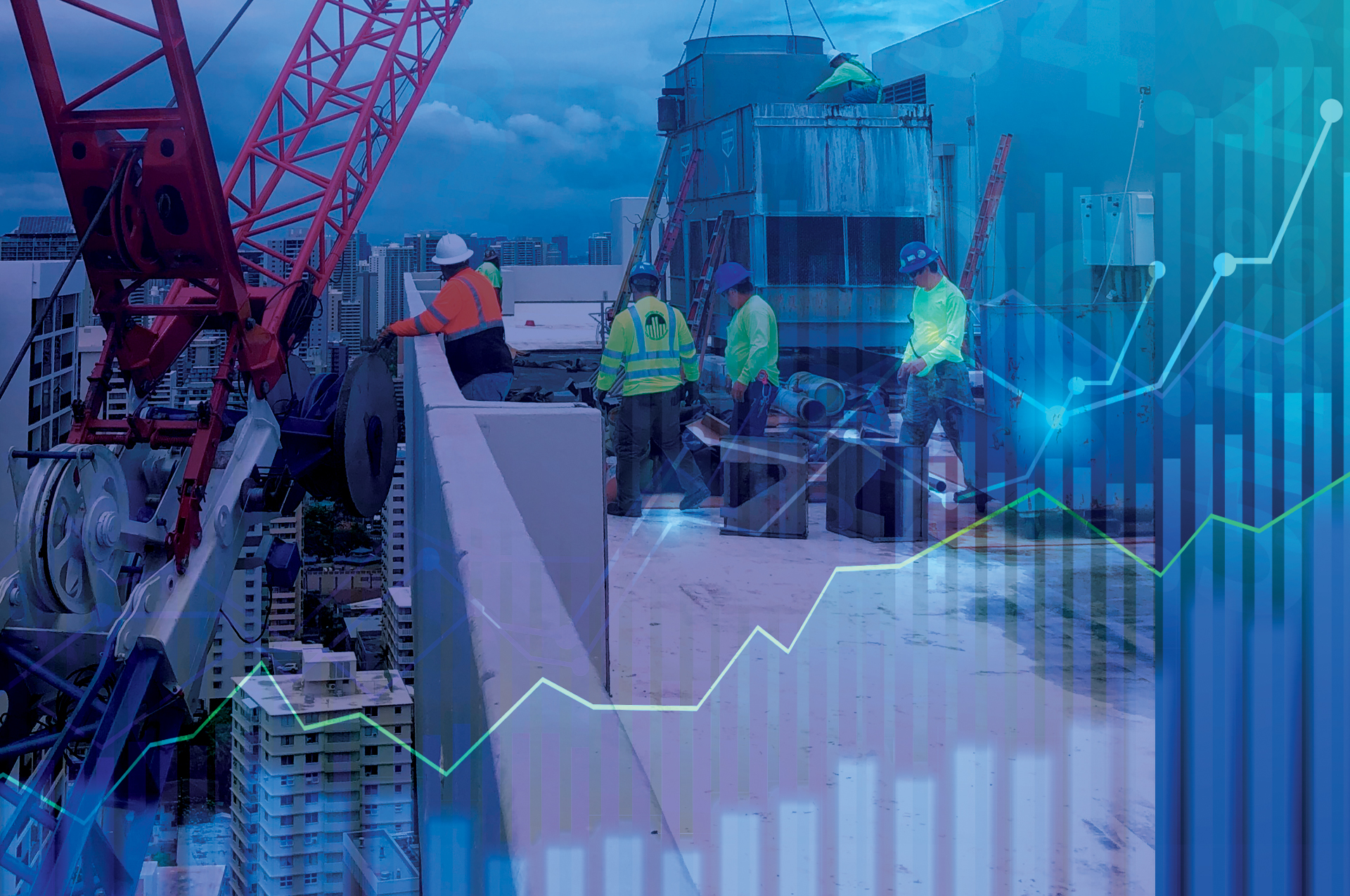International mandates limiting CO2 emissions by ocean vessels may soon come under scrutiny by the Trump administration, but the state’s carriers and the Hawai‘i Department of Transportation (HDOT) are pursuing their long-term goal of accelerating shipping operations through various “green” initiatives.
Matson Inc. and Young Brothers LLC are adding bigger, faster, more fuel-efficient vessels to their fleets. Matson is also upgrading its Honolulu Harbor facilities and preparing for more efficient operations when the revamped Kapalama Container Terminal opens as expected in late 2025.
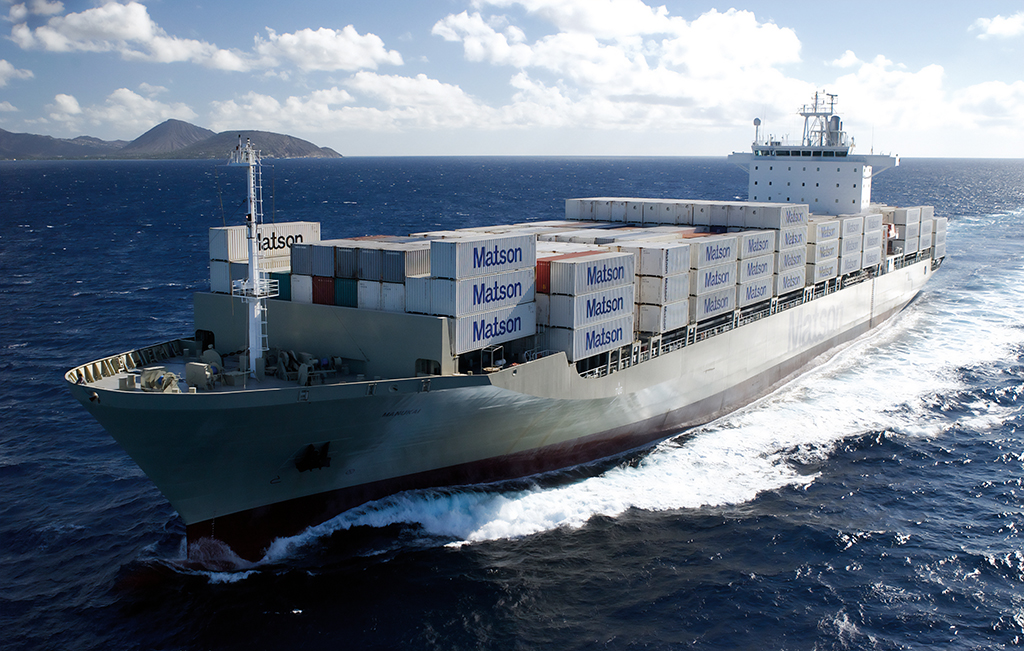
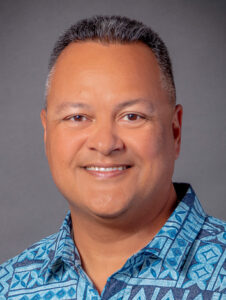
Matson
Hawai‘i’s largest carrier began construction in September of Makua, the first of three new Aloha Class containerships. Along with Matson’s Daniel K. Inouye and Kaimana Hila, the three new vessels will be the largest containerships ever built in the U.S.
Like its sister ships, Makua will run on both conventional marine fuels and liquified natural gas (LNG).
“Matson is investing in modernizing its fleet to maintain reliable, efficient service for Hawai‘i and the communities we serve,” says Len Isotoff, senior vice president of the company’s Pacific division and executive vice president of Matson Terminals. “By introducing newer, larger, LNG-fueled containerships, we not only advance our environmental stewardship goals but also increase our capacity to meet current and future cargo demands, including construction materials.”
Matson is investing approximately $1 billion in the construction of Makua and its sister ships, the Malama and Makena.
Makua is scheduled to be delivered in Q4 2026 and “will be deployed in our Hawai‘i, Guam and China-Long Beach Express services,” Isotoff says. Malama and Makena, scheduled for delivery in 2027, will also service Hawai‘i’s trade lane.
All three ships will be delivered LNG-ready. Additionally, all three will use a shaft generator converting the propeller’s spinning motion into electricity. This “improves fuel efficiency, which reduces engine emissions,” Isotoff says. “The ships will also use the latest antifouling hull coatings designed to improve hydrodynamics that can reduce fuel consumption by up to 14 percent, which will further reduce emissions.”
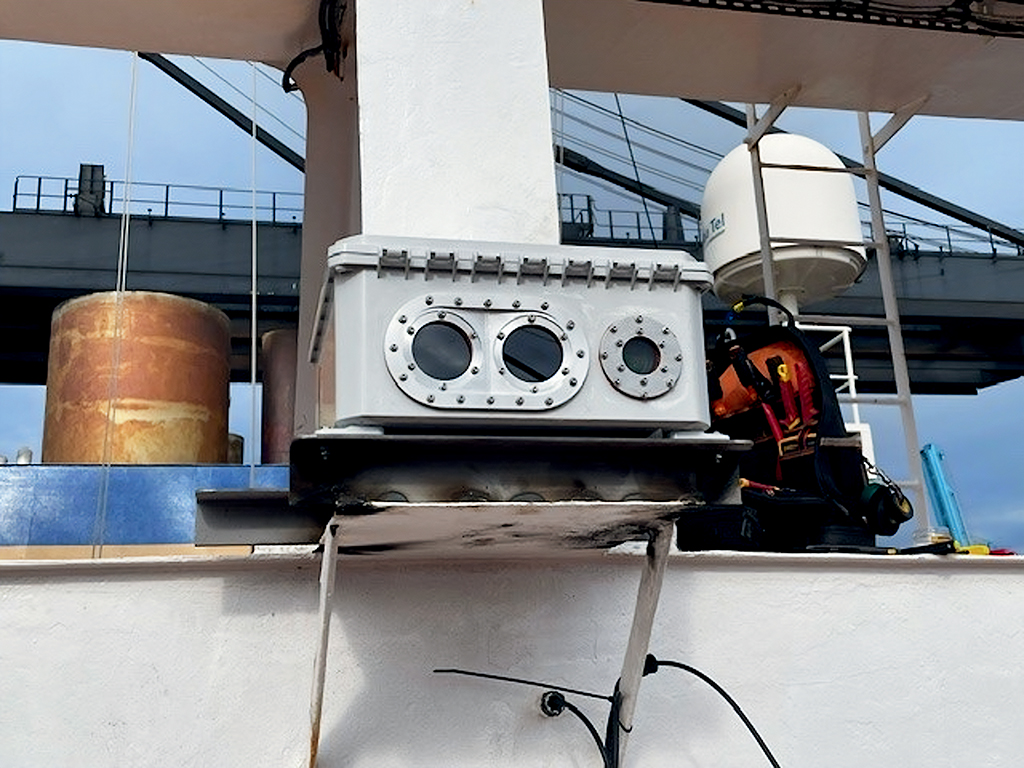
Matson is currently aiming for a 40-percent reduction in greenhouse gas emissions (GHG) by 2030 and net-zero GHG emissions by 2050.
“These vessels are part of Matson’s broader strategy to reduce environmental impact,” Isotoff says.
Matson’s strategy also extends below the waterline. In collaboration with the Woods Hole Oceanographic Institute, Matson is testing a new Whale Watch System to prevent collisions between ships, whales and dolphins.
“The system is still in development,” Isotoff says. “We have whale-detection cameras installed on three of our ships, and hope to start receiving actionable, real-time data from the system later this year.”
Matson’s Manoa and Manulani, in the Hawai‘i/West Coast trade lane, and the Kodiak, serving Alaska, are currently testing the system. “After a trial period to ensure the system is performing as expected, we plan to install cameras on the rest of our domestic fleet,” Isotoff says.
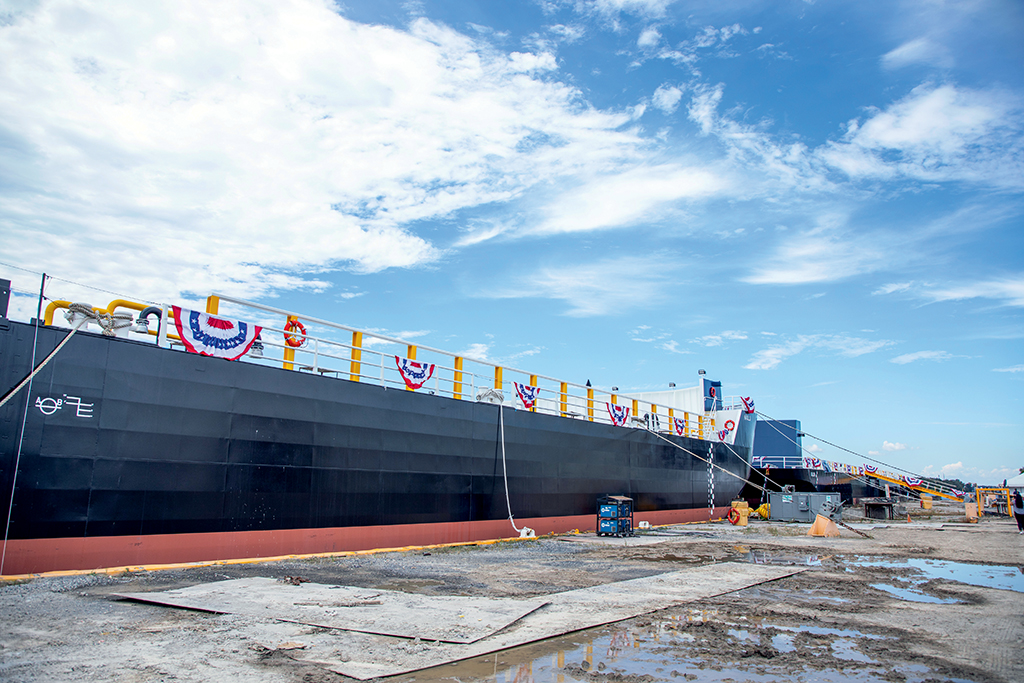

Chris Martin
Young Bros.
Young Bros.’ first new barges in nearly 20 years joined its fleet in December.
Nāulu and Kalohi mark a significant milestone in Young Brothers’ $45-million investment “aimed at enhancing the reliability and efficiency of interisland shipping,” says Chris Martin, the company’s vice president of operations.
The two barges, “alongside our 2024 tugboat additions Mount Baker and Mount Drum, enhance our ability to serve Hawai‘i’s island communities,” Martin says. “These advanced vessels are equipped with innovative technology that strengthens maneuverability, increases cargo capacity and reduces downtime.”
Young Bros.’ new vessels arrive as the company reports a more than 20-percent increase in tonnage for construction equipment and materials statewide last year.
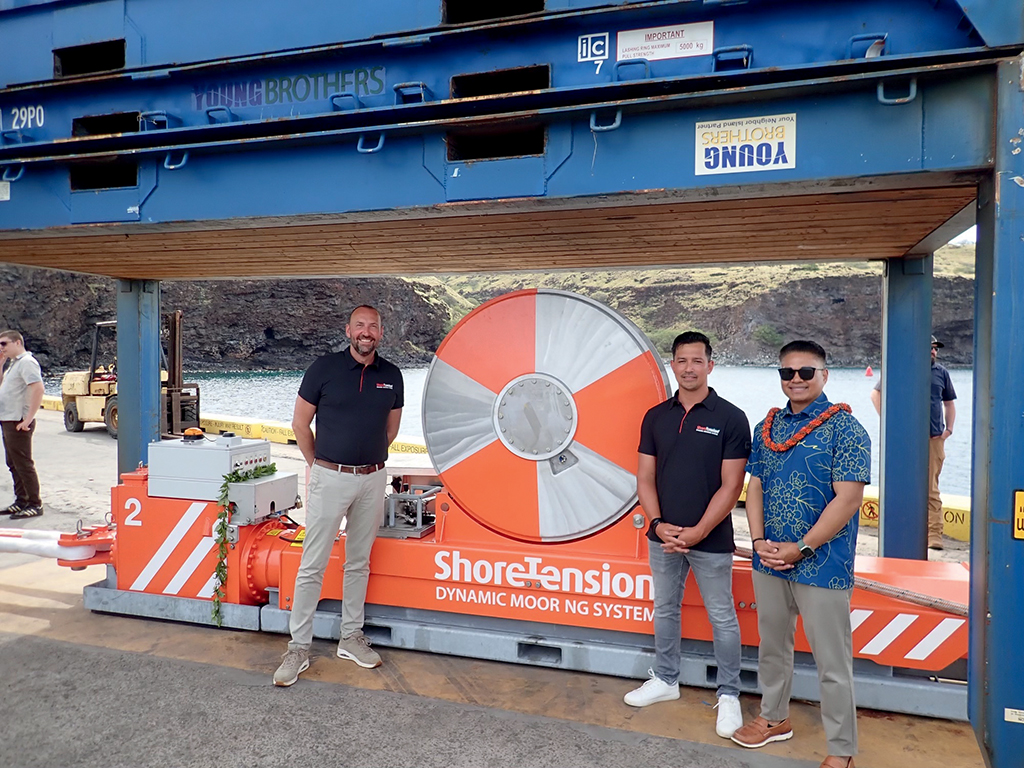
Maui saw the largest cargo increase at 24 percent. While most of the increase was directed at restoring basic infrastructure destroyed in the wildfires, Martin says, “we anticipate some increase in 2025 stemming from the continued rebuilding effort in Lāhainā.
“Nāulu, the largest barge in our fleet, is designed to allow us to scale up cargo volume during periods of peak demand, ensuring we can meet the growing needs of businesses and communities across Hawai‘i,” he says. “Kalohi, tailored for smaller ports like Kaumālapa‘u (Lāna‘i) and Kaunakakai (Moloka‘i), brings added flexibility to our service, supporting the vital transportation of goods to our more rural communities.”
New tugboats Mount Baker and Mount Drum are agile, powerful and are also designed with energy-efficient features to reduce fuel consumption and emissions. One tug is dedicated to weekly sailings to Lāna‘i and Moloka‘i, “ensuring consistent, dependable service to these islands that rely on Young Brothers as the primary source of supplies and goods flowing between the island communities,” Martin says.
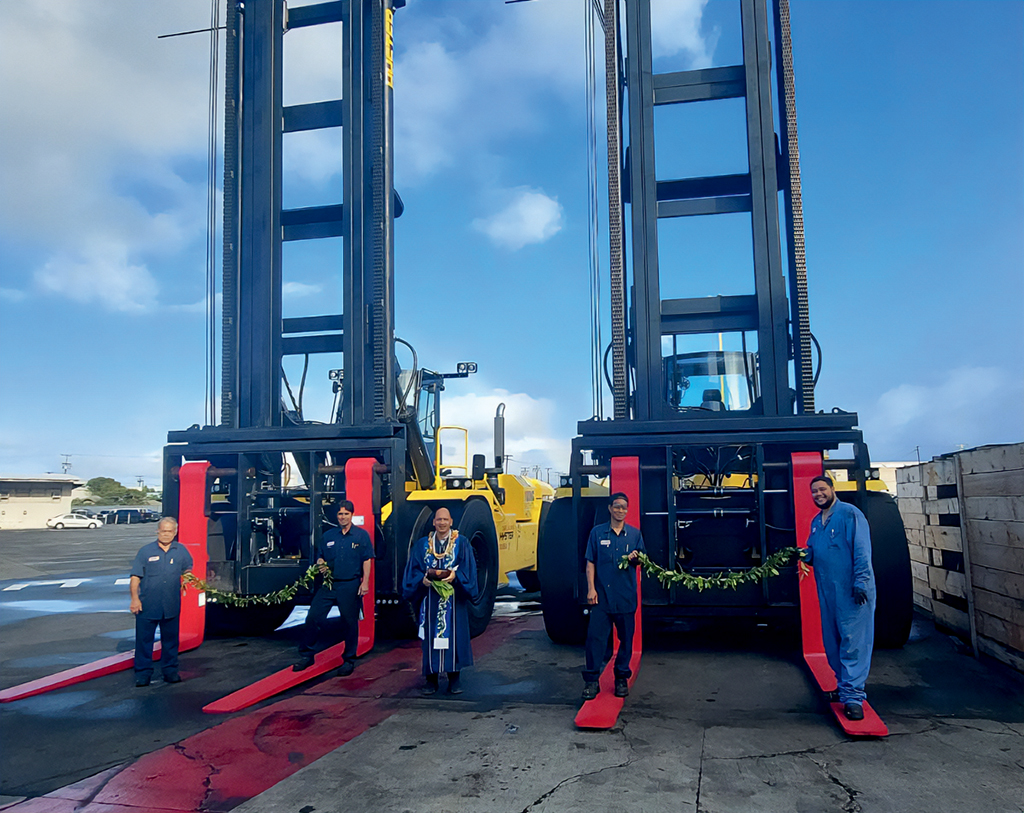
On Lāna‘i, Young Bros. has also strengthened its landside reliability.
The company recently installed the nation’s first ShoreTension mooring system at the Port of Kaumālapa‘u. The system automatically adjusts the tension on mooring lines to keep barges securely fastened to the dock during high winds, large swells and harbor surges. Martin says the $1.5-million investment “has significantly improved the efficiency of loading and unloading cargo, reducing delays caused by weather-related disruptions.”
He says a Hyster ReachStacker was also recently introduced at the Port “to enhance our ability to load and unload containers directly from the dock, even at low tide when forklifts are unable to operate between the pier and barge.”
Young Brothers has also made significant investments in technology to boost efficiency and customer satisfaction.
Martin reports the company’s upgraded customer portal, which features real-time cargo tracking and online bill payment, has seen a 340-percent increase in users over the past six months. He says the introduction of Samsara Realtime Asset Tracking has also improved asset utilization, creating more capacity for shipments and improving service efficiency.
Currently, Young Bros. is implementing a new rate model “that aligns with the actual cost of transporting cargo based on port location and type of cargo,” Martin reports. “By adjusting our pricing structure, we ensure that customers pay a fair share, helping us remain financially stable while continuing to offer high-quality service to all communities we serve.”
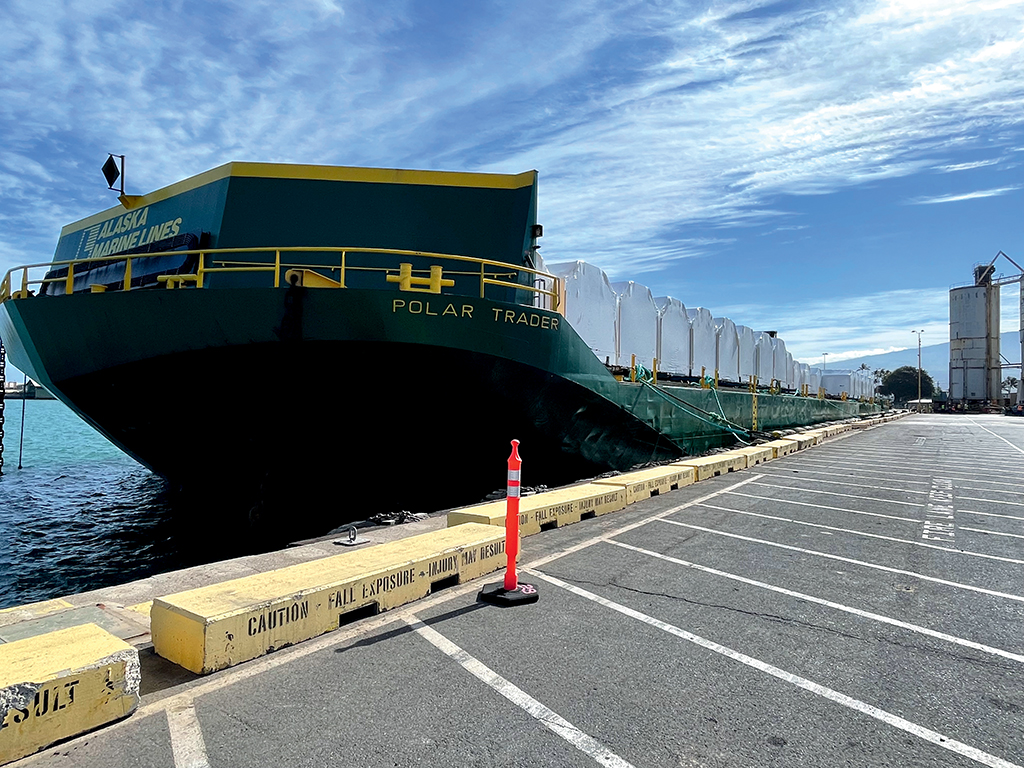

Aloha Marine Lines
Providing scheduled bi-weekly barge service between the Pacific Northwest and Hawai‘i, Aloha Marine Lines (AML) made an especially critical stop at the Port of Kahului in late 2024.
AML’s three barges were loaded with modular units for a FEMA effort to rebuild Lāhainā. Bret Harper, the company’s vice president of sales, says it was a humbling responsibility.
“We were glad we could assist in a small way with the ongoing Maui recovery efforts,” Harper says. “These barges were loaded with temporary housing units for displaced residents. We worked within tight deadlines and load requirements to move 83 modular units on trailers from Seattle directly to Kahului.
“We couldn’t have done this without the assistance of Young Brothers and HDOT Harbors at the Port of Kahului,” Harper continues. “We appreciate their help in getting these delivered safely and on time to those who need them.”
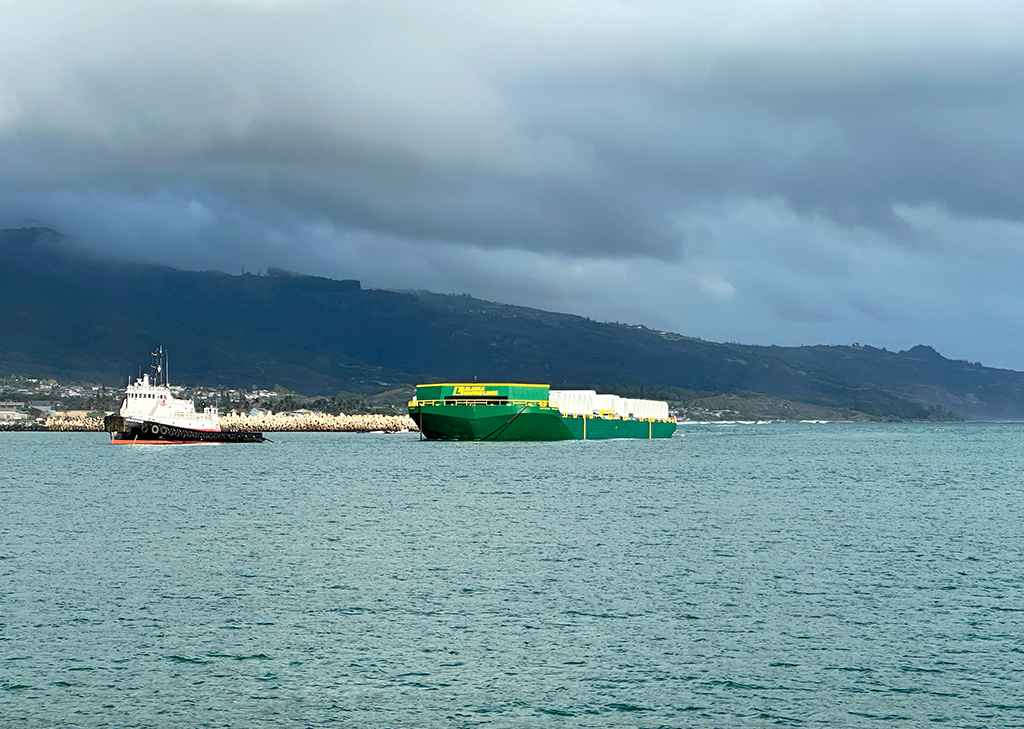

Dre Kalili
Kapalama Container Terminal
The odds that Hawai‘i’s carriers can successfully accelerate their fleets and service hinges on corresponding advances at Kapalama Container Terminal (KCT), the linchpin of HDOT’s harbor system.
Completion of KCT’s $555-million expansion and reconstruction “is targeted for this year,” says Dre Kalili, HDOT deputy director for harbors. “We anticipate construction to be complete and operations to begin at KCT by the end of 2025.”
The state’s second largest carrier will then move from its current location on Sand Island to KCT.
“Pasha Hawai‘i/Hawai‘i Stevedores Inc. (Pasha/HSI), currently operates on a portion of Pier 51 at Sand Island Container Terminal while Matson operates on the remaining portion of Pier 51 as well as Piers 52 to 53,” Kalili explains. “When Pasha/HSI moves its operations to KCT, Matson’s operations will occupy the entirety of the Sand Island Container Terminal.
“HDOT is working with Matson on redevelopment plans for the Sand Island Container Terminal to support its expanded operating area,” she says. “These plans will include capital improvements that will address projections for sea-level rise and erosion, energy redundancy and resilience, as well as tenant improvements including a new gating system and new buildings.”
Isotoff says expansion of Matson’s existing footprint will “increase our terminal capacity by approximately 34 percent and improve operational efficiency. Once the expansion is complete, the terminal will occupy 144 acres, or 6,272,640 square feet.”
Matson is investing more than $60 million in modernizing its terminal. A contractor for the project has not yet been selected.
“Matson is making gate design changes and upgrading technology aimed at providing customers with faster access to their cargo,” Isotoff says. “We are evaluating use of photovoltaic systems and battery storage systems to support our environmental and sustainability goals. We’re also working with the HDOT Harbors Division on an initiative aimed at transitioning terminal equipment from fossil-fuel-based systems to cleaner, renewable energy-driven systems as they become available.
“Our Sand Island Terminal Modernization Project will provide increased capacity, efficiency and speed to accommodate Hawai‘i’s current and long-term shipping needs, ensuring we remain prepared for future growth and continue delivering the highest level of service to our customers.”

